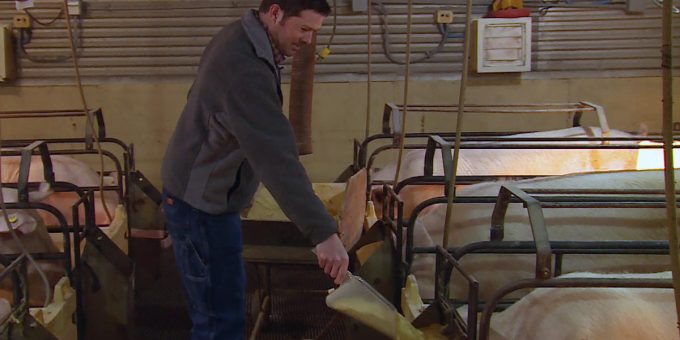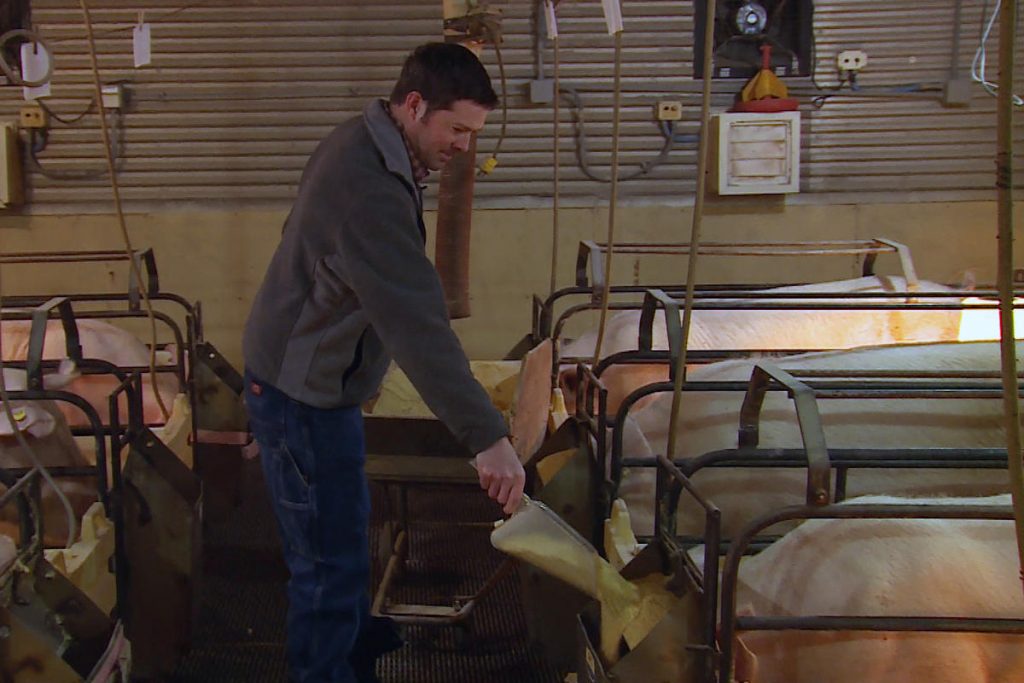
(BLOOMINGTON) – Sustainability is a hot button in the discussion around how food is raised today. However, sustainable farming practices are nothing new and have a long history helping pig farmers achieve one of the most significant evolutions in animal agriculture in the last nearly six decades.
On Thursday, September 26, members attending the Fall Conference of the Indiana Association of Nutrition and Foodservice Professionals in Bloomington will hear from David Hardin – a 3rd generation family farmer from Danville, Indiana – about how farmers have continuously improved pig health and thus food nutrition and safety through science-based farming methods while also reducing their impact on the environment.
Hardin’s presentation will take place at 1:30 p.m. at the Hilton Garden Inn located at 245 N. College Ave. in Bloomington.

Hardin’s presentation will highlight advancements in farming practices that have driven this 60-year success story in animal agriculture. A new study from the University of Arkansas shows, when compared pound per pound to pork in the 1960s, pig farmers today:
- Use 75.9% less land
- Use 25.1% less water
- Have reduced their carbon footprint by 7.7%
- Have reduced energy use by 7%
While U.S. pork production increased 84% from 1960 to 2015, the study also shows pig farming’s environmental impact decreased through:
- Improved pig feed and watering systems
- Smart Barn technology
- Increased crop yields
“We need to share this success story and explain why sustainable agriculture will always be evolving as farmers find ways to develop a better food system,” said David Hardin. “We also want to encourage conversation and increase understanding of what sustainability means to each of us.”
At the same time, farmers have made pork one of the leanest, nutrient-rich protein choices available – confirmed by the U.S. Department of Agriculture in 2006 through a study demonstrating pork tenderloin is as lean as skinless chicken breast. The American Heart Association has also certified pork tenderloin and pork sirloin roast as heart-healthy foods.
Healthier pigs also mean safer food and lower cooking temperatures: USDA guidelines have been updated for safely cooking whole cuts of pork such as chops, roasts, and tenderloins to a medium-rare internal temperature of 145 degrees Fahrenheit with a resting time of three minutes before carving or eating. To achieve medium doneness, cook whole pork cuts to 160 degrees Fahrenheit.
:Pork is the number one consumed protein worldwide, yet most people do not know the proper cooking methods to enjoy pork cuts for their best taste,” says Hardin “We are constantly working to educate everyone, from professionals in food service to home cooks, about how to cook pork so they can enjoy this lean, nutrition-packed protein.”
Hardin added, “I’d like to thank the Indiana Association of Nutrition and Foodservice Professionals for giving me an opportunity to share how farmers place a high priority on pig health, food nutrition, and sustainable farming methods to ensure their farms for future generations.”



